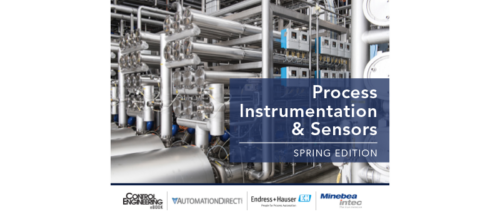Pursuing wireless power, implementing wireless sensing
The August 2017 issue of AppliedAutomation focuses on the Tesla coil and how to implement wireless process sensing in large plants.
In his pursuit to wirelessly transmit power, inventor Nikola Tesla designed the Tesla coil, an electrical resonant transformer circuit, in 1891. It produces high-voltage, low-current, high-frequency ac electricity. He experimented with different configurations consisting of two, or sometimes three, coupled resonant electrical circuits. Tesla patented the Tesla coil circuit April 25, 1891. Although he patented many similar circuits during this period, this was the first that contained all the elements of the Tesla coil: a high voltage primary transformer, a capacitor, a spark gap, and an air core oscillation transformer.
This issue’s cover story describes how researchers at The Geek Group National Science Institute, a science, technology, engineering, and math (STEM) collective in Grand Rapids, Mich., are revisiting Tesla’s vision and seeking to discover new uses. According to the author, "They have set out on an ambitious program of research and experimentation that would have been impossible in Tesla’s day."
The second story in this issue explains a four-step process for implementing wireless process sensing in large plants: identify, acquire, analyze, and execute. "Oil and gas, chemical, refining, food and beverage, power, and other process industries are under pressure to increase production, make processes more efficient, reduce energy usage, cut maintenance costs, improve safety, and meet dozens, if not hundreds, of federal, state, and local regulations," writes the author. "To accomplish these goals, plants must monitor all aspects of a process, acquire data from new instrumentation, analyze the data to turn it into actionable information, and take steps to remedy problems."
Focusing primarily on WirelessHART sensors, the author provides several industry-specific examples of successful wireless implementations.
This article appears in the Applied Automation supplement for Control Engineering and Plant Engineering.
– See other articles from the supplement below.
Do you have experience and expertise with the topics mentioned in this content? You should consider contributing to our CFE Media editorial team and getting the recognition you and your company deserve. Click here to start this process.


